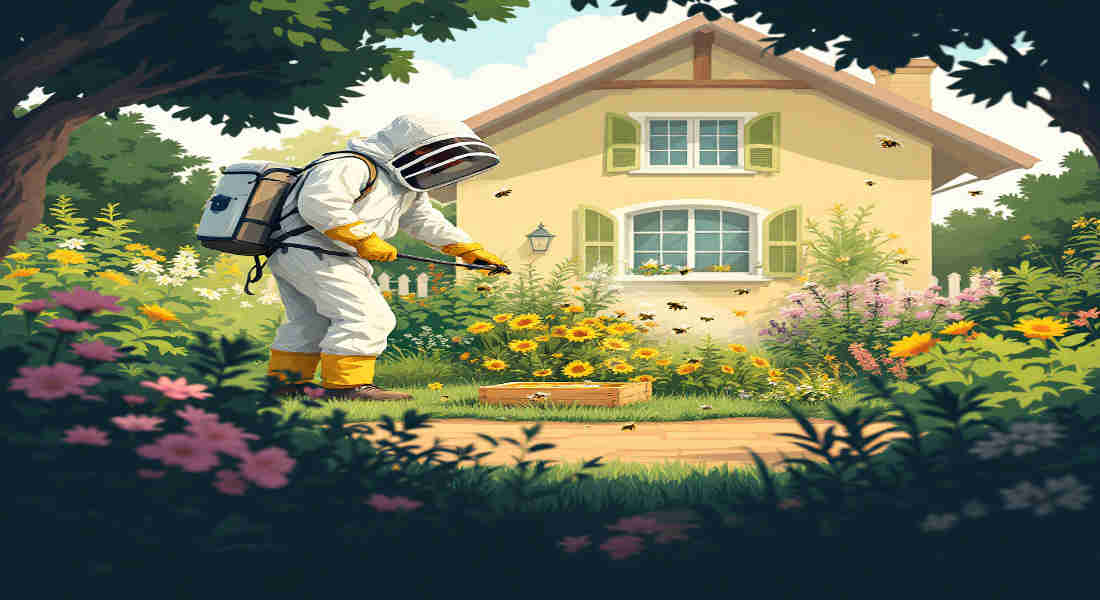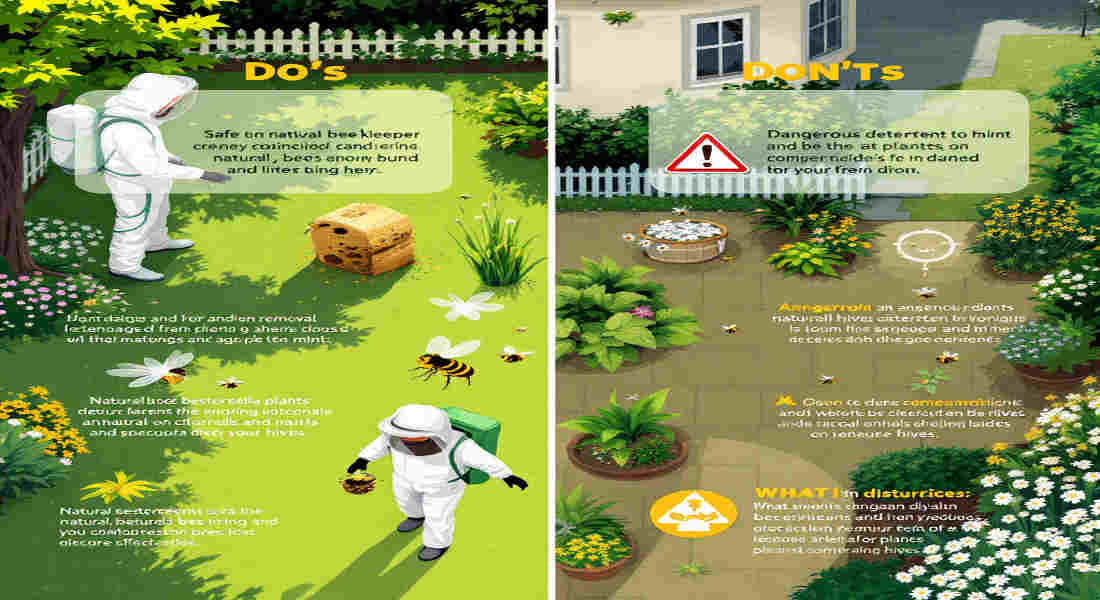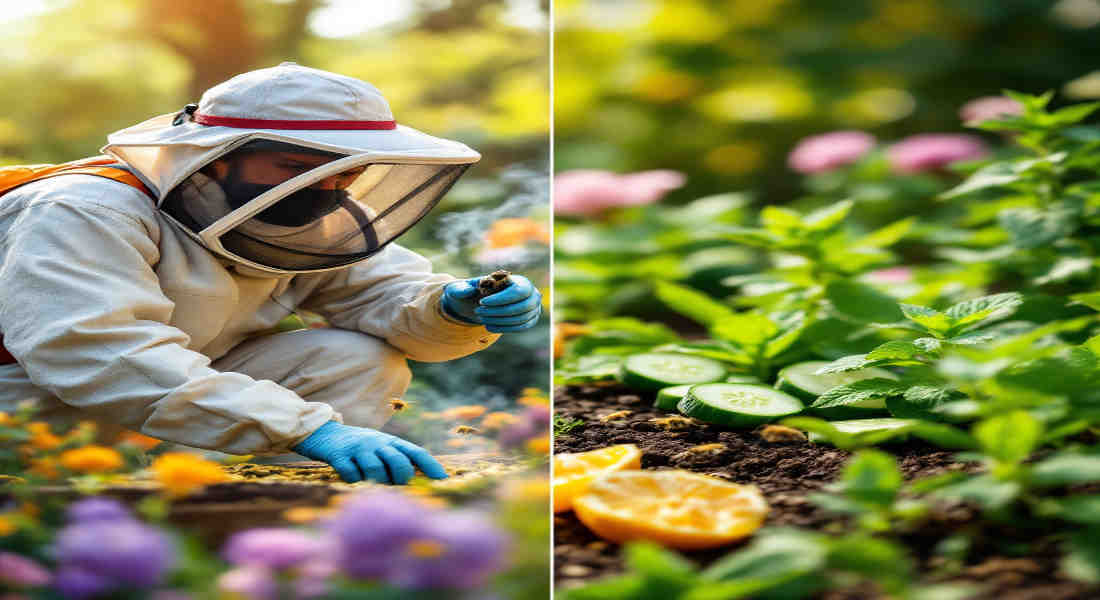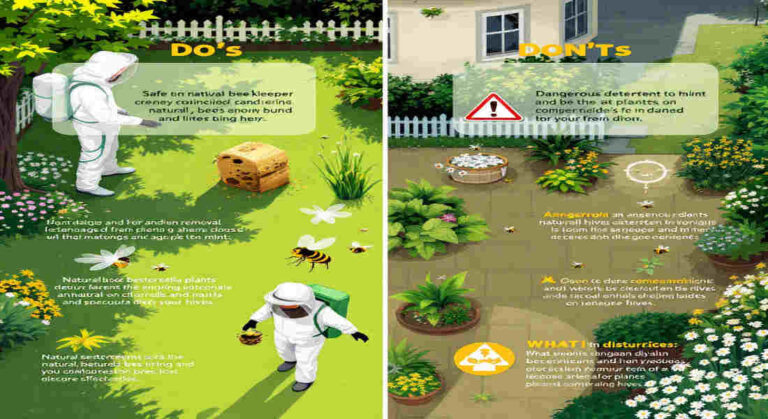Bees are essential creatures that play a vital role in maintaining the balance of our ecosystem. However, when they decide to make your house or garden their home, they can quickly become unwelcome guests. Understanding the reasons behind their attraction to your property and taking preventive measures can help you strike the perfect balance between coexistence and safety.
Why Are Bees Attracted to My House and Garden?
Before jumping into ways to get rid of bees, it’s crucial to understand the reasons they’re drawn to your home. Bees are naturally attracted to specific features in residential areas that mimic their ideal environment.
The Role of Bees in Pollination and Garden Health
Bees are nature’s pollinators. They contribute to the growth of flowers, fruits, and vegetables by transferring pollen from one plant to another. Without bees, many crops and plants would fail to thrive, disrupting the food chain.
If your garden is abundant with flowering plants, it’s likely a haven for bees. Brightly coloured flowers—especially in shades of blue, yellow, purple, and white—naturally attract bees. Additionally, nectar-rich plants such as lavender, butterfly bush, and sunflowers make your garden irresistible to these buzzing visitors.
Common Attractants in Residential Areas
Several elements in your home or garden may unintentionally invite bees to settle in:
- Nectar and pollen sources: Bees are drawn to native plants, colourful blooms, and nectar-heavy flowers.
- Food and water availability: Uncovered garbage, sugary drinks, pet food, and standing water can attract bees looking for sustenance.
- Shelter opportunities: Cracks in walls, eaves, attics, and hollow structures like garden sheds provide the perfect spots for bees to build nests.
By identifying these attractants, you can take the first step toward managing bee activity around your home.
Identifying Bee Activity and Nests Around Your Home
Spotting bee activity early on can save you from dealing with a full-blown infestation. Bees are more likely to stay if they’ve already built a nest. Let’s learn how to identify their presence.
How to Spot Bees and Their Nests
Bees are most active during dawn and dusk, making these times ideal for observing their movements. Look for:
- Buzzing sounds: A steady hum near specific areas of your house or garden can indicate bee activity.
- Paths of bee traffic: Bees will often follow the same route to and from their hive.
- Visible nests: These can appear in wall crevices, eaves, under porches, or even in hollow trees.
Early detection prevents the risk of an infestation and helps you take action sooner.
Common Nesting Sites in and Around Houses
Bees seek out safe, secluded spots to build their hives. Common nesting sites include:
Location Why It’s Attractive
Attics and eaves Hidden, elevated spaces offer protection from predators
Wall voids Cracks and gaps in walls mimic natural cavities
Porches and decks Undisturbed areas provide safety
Hollow trees and sheds Natural or artificial hollow spaces are ideal for hive-building
Regular inspection of these areas is crucial to preventing bees from establishing a nest.
How to Get Rid of Bees in House Gardens: Effective Methods
If you’ve identified bee activity or nests, there are several strategies you can use to safely and effectively remove them. It’s important to prioritize natural methods and take necessary precautions to avoid harming yourself or the bees.
Natural and Non-Toxic Prevention Techniques
Using natural deterrents is a humane and eco-friendly way to keep bees away. Here are some effective methods:
- Plant bee-repellent plants:
- Certain plants like mint, citronella, rosemary, lavender, and ribwort deter bees while adding beauty to your garden.
- Essential oils and sprays:
- Mix essential oils like peppermint, clove, or lemongrass with water to create a natural spray. Spraying these around entry points and garden areas can discourage bees.
- Cinnamon and garlic:
- Bees dislike the strong smell of cinnamon and garlic. Sprinkle these near nests or cracks to drive them away.
- Seal entry points:
- Use caulk or metal mesh to block cracks and crevices where bees might enter.
These methods are safe, easy to implement, and don’t harm the environment.
Safe Removal of Bees and Nests
If prevention hasn’t worked and a nest is already present, you’ll need to focus on removal. Here’s how:
- Locate the nest:
- Identify the exact location of the hive. Remember, bees are less active in the evening or at night, making this the best time to act.
- Natural elimination:
- Dusting borax or boric acid near the hive can disrupt the colony’s functioning without the use of harsh chemicals.
- Pesticides:
- If natural methods fail, use pesticides like Raid with caution. Always wear protective gear and follow the instructions carefully.
- Hive removal:
- After extermination, removing the hive is critical to prevent bees from returning.
Pro Tip: Avoid attempting to remove large or hard-to-reach hives on your own. In such cases, it’s best to call a professional.
When to Call Professionals
Certain situations require expert intervention:
- If the hive is located in a dangerous or inaccessible area.
- For large infestations or aggressive bee species.
- To avoid harming the environment while ensuring effective removal.
Professionals have the tools, experience, and knowledge to safely handle bee removal.
Preventing Bees from Returning: Long-Term Strategies
Once you’ve successfully dealt with bee activity, it’s important to implement long-term strategies to ensure they don’t return.
Environmental and Habitat Management
- Choose plants wisely:
- Avoid planting bee-attracting flowers near entrances or patios.
- Eliminate food and water sources:
- Cover trash bins, clean up food debris, and remove standing water to minimize attractants.
- Integrated pest management (IPM):
- Utilize eco-friendly pest control techniques to strike a balance between managing pests and protecting beneficial insects, such as bees.
Structural Maintenance and Inspection
- Seal cracks and gaps:
- Regularly inspect your house for potential entry points and seal them with caulk or foam.
- Install screens:
- Use screens on windows and doors to block access.
- Natural repellents:
- Use essential oils or sprays seasonally to repel bees.
Balancing Bee Conservation and Home Safety
Bees are vital to our ecosystem, but that doesn’t mean they should take over your living space. Striking a balance between conservation and safety is essential.
Understanding the Importance of Bees
Bees contribute to biodiversity and ensure the survival of many plant species. While they can be a nuisance, it’s important to recognize their role in maintaining a healthy environment. Relocation and deterrence are often better alternatives to extermination.
Ethical and Eco-Friendly Approaches
Rather than killing bees, consider non-lethal deterrents or contact professional bee removal services that focus on relocating hives. Supporting bees by planting native species away from living areas can also help maintain a healthy relationship with these pollinators.
You may also read (how to estimate home garage roof replacement costs).

